Imagine a day when it was a very normal thing for your friend to ask, “Oie, triple hernu janchhas?”
Before you start an outrage over my choice of topic, please do take time to read the article in full, and if while reading, you do identify yourself with a character or two, do feel free to let me know.
Of the very many things that make me ache about the Darjeeling of yesteryears is the innocence that this gorgeous town of ours once had. People were innocent… Really innocent, in a very palpable way… I can’t say that the same is true today.
Today Darjeeling has changed, perhaps for the better. Youngsters are more sophisticated, more worldly-wise, more knowledgeable, and sadly more materialistic; and elders have become more cunning and vicious as well.
For me, I am yesterday’s child and that is where I still feel I belong. I cannot relate much to the Darjeeling of today. Don’t get me wrong, with time everything changes, but should it? is a question, I often ask myself.
When I talk of Darjeeling, I am not talking of the 70s or 80s. That’s too far back in terms of the modern MacBook Air and smartphone days. I won’t torture you with ‘uilleeyyy-uilleeyyy ko kura’… I am talking about the 1990s when life had just started to happen for me, I was 15… and it was 1995 – the year of Madhyamik.
Back then, going for tuitions en masse was just starting to become fashionable, and like the chickens left their coop, all the Class 10 students were joining this tuition and that. These days kids go to Siliguri; some even to Kolkata and Delhi to prepare for their Class 10 or Class 12 exams. Back then, for those of us who used to live in the outskirts, being able to go to the town for tuitions was a BIG thing… a REALLY BIG thing.
Tuitions meant three things – i) Season ii) Hang out with friends all day, and ironically iii) Don’t have to worry about studies.
I used to go for tuition near Municipal Girls’ High School, and it was a great place to be. Right in the heart of the town, the class would last for a few hours, and then we would roam the entire town like there was no tomorrow. We were the KINGS of Darjeeling, or so we used to feel.
Darjeeling back then, as I have said earlier, was a very innocent town. There was a certain charm about the people, which of course remains to this day, but the kind of innocence I grew up with was very different.
The Darjeeling of 1995 was a very simple place. Ambassadors were still the most luxurious of vehicles, a lucky few did own Maruti Omnis and Maruti 800s, but for ordinary folks like us, the Ambassador was the most luxurious vehicle around. Land Rovers still ruled the roads, and computer institutes were just starting to become big.
If I am not mistaken, up until 1993, learning to type was very important and if you wanted to land an office job you needed to learn short-hand typing as well. There were a few places where you could learn how to type on a typewriter – one was near the ABC Restaurant, another one was located in the top floor of the Old Super Market complex, and another, near the Happy Valley electricity substation. It was a wooden building, green in colour.
But by the time 1995 arrived, computer institutes had made inroads and even though learning how to type was still a big thing, people had started to learn computers as well. Back then we had two computer centres that were sort of rivals to each other – Gigabyte Computer Centre below the Gymkhana Club, and International Computer Centre near Sharma Garage. Much later, Aptech and IIIT entered the Darjeeling market, and then WEBEL.
So you can imagine how simple life must have been when learning how to type on a typewriter, and taking notes in shorthand were the keys to securing a nice job.
Even though cable TV had started in 1992, and by 1995 we were all familiar with “English” music, thanks to MTV. Doordarshan was still the channel everyone swore by. Sunday special was “Chandrakanta” followed by “Mowgli” and “Duck Tales.” Each week a Sunday special movie would be shown starting at 6 pm, which the entire village would watch, and discuss the next day. I do intend to write on our TV days soon, as it deserves special attention.
Yes! It has now been 20 years when I think about it, but to me, it feels like yesterday, and I guess most of you who grew up back then feel the same.
Those who were born after 1995 may find it difficult to believe, but back then, in Darjeeling, we didn’t have CDs or DVDs, we used to have video cassettes, which we used to play in something called VCR or VCP. We didn’t have mobile phones either. Heck, most of the people didn’t even have landlines, and the funny thing about landlines is that most people still don’t have them. A handful of Public Call Office (PCOs) was starting to spring up, but even those were rare.
So imagine: We were having to make do with 1 movie per week, and thanks to the economic liberalization in 1991, video cassette players – VCR and VCPs – were becoming more commonplace than in the late 80s. Those lucky few who could afford to buy VCRs would be able to watch movies whenever they wanted, while mortals like us had to wait for Sundays and that never felt fair.
The growing popularity of VCRs had given birth to two phenomena: i) video cassette parlours, and ii) video halls.
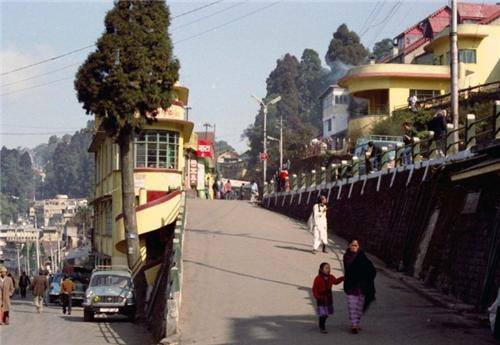
So how things would work is, you would have to buy a membership at a video cassette parlour, and then you could rent videocassettes at the rate of Rs. 5 per day (in 1992), which had climbed up to Rs 10 by 1995. The new supermarket had just been built and on top of the new supermarket, complex was a dream world full of video cassette parlours. Those were the most elite of stores back then. For the life of me, I cannot think of all the names, but I guess ‘Billboard’ was the most popular one. There were a few such cassette parlours near Bata ko ukkalo as well.
If you were lucky and you owned a video cassette player at home, you wouldn’t watch a new movie by yourself, the whole neighbourhood would watch with you. I remember at my place, the very first movie we watched after our Kaka bought a VCR was Mithun’s “Mujrim.”
But this article is not about video parlours, it is about the second phenomenon – the Video Halls.
Since the population density of the Darjeeling region was always low, movie halls were only to be found in the bigger towns – Darjeeling, Sonada, Kurseong, Kalimpong. So most of the smaller settlements had to make do with Video Halls.
Video Halls, much like picture halls, had seats set up in a stair format where each succeeding seat row was set higher up than the one below. Often, if you were at the last seat, you’d have to look down on the TV screen and if you were unlucky enough to be at the front seat, you would have to look up all through the movie. You’d invariably have a neck sprain the next day.
These halls would show different movies each day, and they would have at least two shows; rarely three or four. A Hindi movie for the day show and an English one for the night show was the standard format. Each movie was shown for anywhere between 4 days to a week depending on the popularity of the movie.
Movie names written in coloured chalks on a blackboard with a small cassette cover stuck to the blackboard (as movie posters were not available) would announce which movie was being played. Hindi movies would usually attract aunties, and the English ones were generally watched by the men. Most watching the English movie would decide whether they wanted to see it or not, based on the cassette cover and the description provided by the video operator, as very few who would watch movies in a video hall would know how to read proper English.
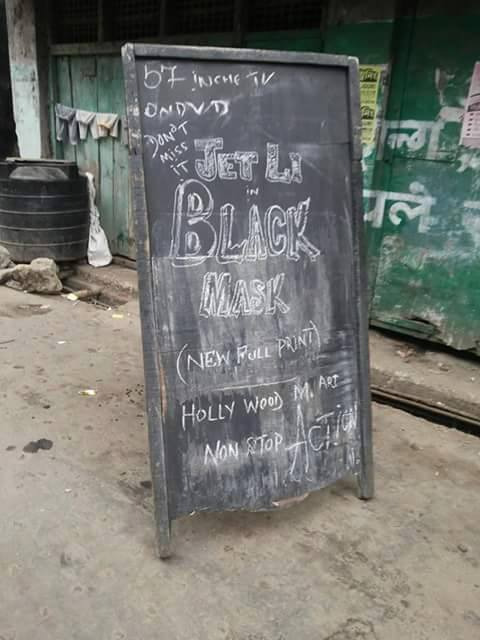
Often, a martial arts movie would be marketed by the video operator as, “Dameee cha nee… Udeee udee hikako cha… he literally flies to kick butts”. If it was an action movie with lots of gun fights, then the same operator would go, “Amamama… bhu-tu-tu-tu machine gun le bhuteyra chendrai-chendra… chaalni banai deko cha…. they fire so many bullets… the whole body is turned into a strainer”… Who would not be tempted by such a description?
Sometimes the patrons would come out pissed halfway if the movie turned out to be a drama. “Boleyko khalee raicha! K hernu tyesto… all they did was speak! who would watch such a movie?”
But these video halls that I have described were mostly based in the outskirts of the towns.
In Darjeeling town itself, we had video halls at Beni’s ko terso. For movie lovers, it can be described as “Paradise Lane.” I watched most of my movies here.
There were different halls and they would show different kinds of movies. Some excelled in action flicks, some in martial arts, and some in drama. But there was this one movie hall which in particular had a notorious reputation – Himalchuli. It showed – blue movies – porno films. If Darjeeling was heaven, that hall was would be our Apple tree. It was a forbidden fruit which only those daring lucky few could savour.
Entering Himalchuli was a “rite of passage” of sorts. That is what separated kids from boys, and boys from men. Not everyone entered Himalchuli. Most may not even be aware of it, but those who know what I am talking about will agree that watching a blue film in Himalchuli was a necessary step to cross if you were going to grow up.
“Himalchuli ma picture hereko chhas…. have you seen a movie in Himalchuli?” would be a question everyone dreaded, till you had gone there, because if you answered ‘No’, then the very next sentence would be, “Aaeee… bachhhai chass bro…. Ohhh you are still a kid then…” See? It was a “rite of passage” that way.
I finally entered Himalchuli with my best friend when I joined the tuition for Madhyamik. With us were a bunch of other young giggly boys aged between 15 to 17 full of hormones. Not knowing what to expect, we went to the most “corner ko panee kuna ko… the furthest one from the door seats” and did our best to cover our faces with the mufflers we were wearing. Remember watching porno was forbidden, and if someone older you knew caught you entering such hall, it meant “chhaala tarinjel dhulai… you would get such a beating that your skins would be peeled” at home.
In the West, losing your virginity may have been the sign of entering adulthood. In Darjeeling, back in 1995, it was watching porn, in Himalchuli.
The movie started and ended.
Dazed and in a state of shock my friend and I left the hall. Both unable to comprehend or speak about what we had just watched. Till we reached home, neither of us uttered a word. Once we reached home, almost simultaneously we said, “Bholi arko hernu parchha, la?” We were hooked.
Entering Himalchuli or any other video hall that was showing porno was always a challenge. Sometimes you would meet folks you knew in there, and that would create an awkward situation. Moreover, there was always the danger that the cops would raid the joint. It was a true “forbidden fruit” situation for us youngsters.
One time while coming out of one such hall, we heard one guy say, “Aaaa Mheymhey?” Apparently, a dude while leaving the hall happened to see his grandpa also leaving the same hall. Their eyes met… and not knowing what to say, this guy ended up saying, “Aaaa Mheymhey?” “Mheymhey – Grampa” in turn refused to acknowledge his presence and went his way.
I don’t know how the two must have interacted at home. I still laugh my a** off when I imagine the awkwardness of the situation. Bichara “Mheymhey” and the dude… K chai bhanyo hola ek arka lai… what must they have said to each other?
At another time, as we were leaving the hall, one of my friends pulled me back sharply. I turned and asked, “K bha… what happened?” And he goes, “Hyer na… look up” covered in all woollen topi and a muffler, but with his ‘kailey na chodney… all familiar coat’ was Chhetri Sir, our 7th standard class teacher leaving the hall. God!! The scare!! But now we knew his dirty secret…
Then one time my friends and I were in this hall that had a backrest in each row. There was this dude sitting in front of us, who was Aghee Dekhin Khanini Maadeko Maadekai (rubbing tobacco for a long time) in such an annoying way that his elbow was hitting the backrest, which was touching our feet. It had almost been 10 minutes, and this guy is still rubbing the tobacco – Khaini Nai Maardai Cha.
That is when it dawned on us what he was rubbing wasn’t the tobacco… Khaini madeko ta haina po raicha
Oh! The absurdity of the situation I tell you! It was too much! So we kicked the backrest to let him know that we knew. Perhaps embarrassed, he stopped, and we started to watch the movie with full concentration. After about 10 minutes, this dude starts “Khaini Maadnu” again… We left the hall. His audacity had left us dumbfounded.
After that incident, we never went back to watching porn again. It was beyond too much, it was three much. The fact that he restarted Maadusing Khaini again after we had kicked his seat is something we couldn’t digest. Our tryst with video halls lasted about a month and a half, but it provided for an amazing growing up experience.
But that didn’t stop the amazingly weird stories relating to “Video Halls” from trickling out.
I heard of this epic tale about this one dude, which I think is the classic of all video hall tales. Apparently, this due was watching the movie in peace, with his legs crossed on the seat and his shoes on the floor, when the police raided. Someone sitting near the door happened to turn off the lights right at that moment. Taking advantage of the darkness this dude flees without his shoes and managed to jump from a floor above and escape. People saw him running in his socks only.
That guy became a LEGEND in the video hall circles.
Like everything Darjeeling, that guy became a comic legend, with people often introducing their new friends to old ones as, “Astee tyo mochaa sanga bhagney suneko… heard of the guy who ran only wearing socks?” “Suneko…. yeah?” “Ho yoi ta ho tyo… this is him.”
Hahahaha the fun of it all.
The video halls did try to keep up with times. “Indian” was the video hall that upgraded to Dolby Surround sound first. The rest followed later. Then they introduced a projector to show movies on a bigger screen, introduced better screens, and did their best.
Yet, they couldn’t compete with the changing times. Video parlours reinvented themselves as CD parlours, but eventually, cheap Chinese CD players and later DVDs started to be sold, and pirated movies flooded the market. Then the Internet arrived.
People stopped going to the video halls. The video halls were then shut down, followed by the Video Parlours.
With the Internet taking over our daily life, which started around 2003-04 the innocent Darjeeling with a special place for “Video Halls” is now lost, perhaps forever.
I do not condone watching pornos or rue the shutting down of the video halls, but I rue the loss of the “rite of passage” which it symbolized.
Darjeeling, I guess, grew up too fast after the Internet. I liked the slow-growing Darjeeling better.
[Cover pic by: Kunga Tashi showing inside of a video hall in Darjeeling had won the Indo-African photography competition]

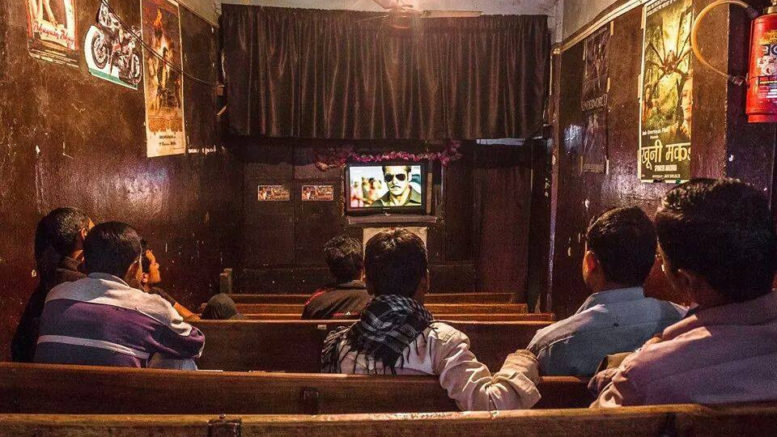
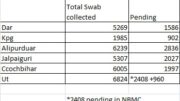


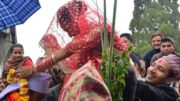
Nice write-up made nostalgic (tyo din haru jhaljali yaad ayo bro…) i can only say that we might have crossed path or shared a bench in one of these parlors serveral time. Cheers!
Plesae upload this one………..
Nice write-up, made me very nostalgic (tyo din haru jhaljali yaad ayo bro…) i can only say that we might have crossed path or shared a bench in one of those video parlors several times. Cheers!